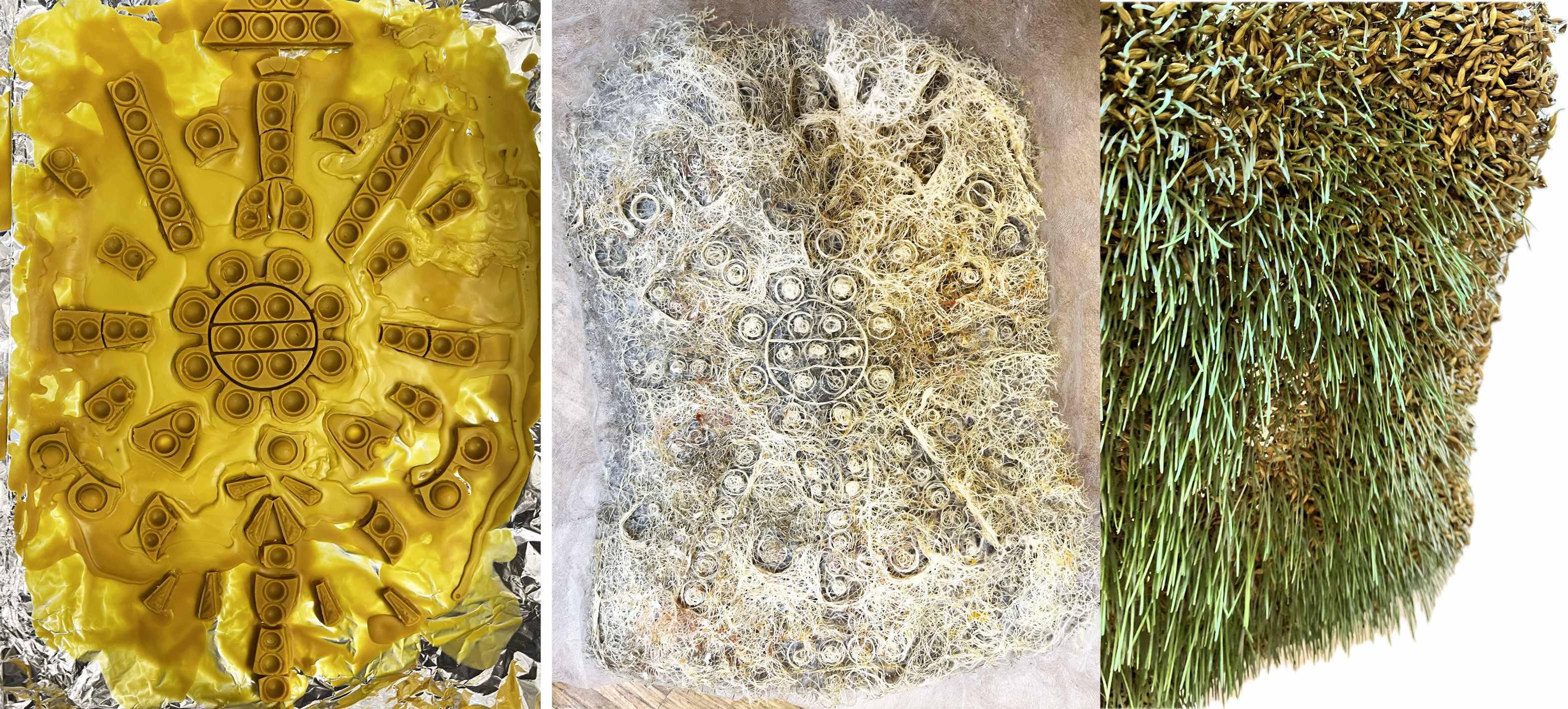PROCESS | Embroidery cultivation & advanced technologies¶
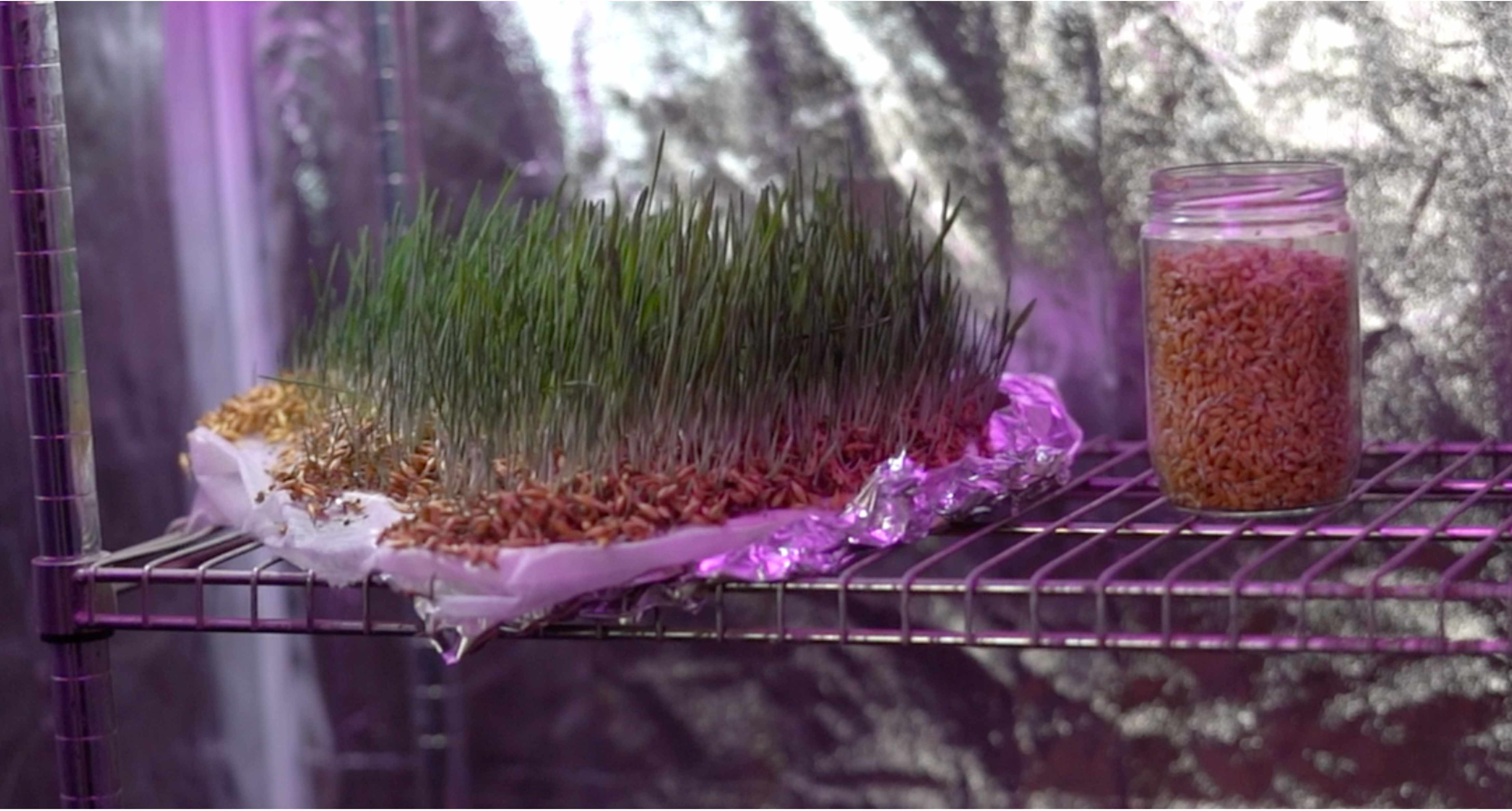
PROCESS | growing conditions¶
I used growing lights to cultivate the embroidery within the growing box. Seeds need to be treated against possible pathogens before planting.
- Humidity 50% - 60%
- Temperature 20 - 22°C
- Moderate light needs: 10-12 hours of light per day, Color temperature: 6,000 K
PROCESS | Preparation of seeds¶
Germinating seeds is the process by which a seed develops into a new plant. It involves the activation of the seed's metabolic processes, leading to the emergence of a young shoot or root. Soaking accelerate germination and increase the proportion of seeds that successfully germinate. It's always a good idea to start with high-quality seeds from reputable sources and practice good gardening hygiene to minimize the risk of plant diseases. Sanitizing seeds with vinegar is a simple process that can help reduce the risk of spreading diseases or pathogens.
- Barley / Wheatgrass
- Soaking time ~ 8 - 12 h
- Temperature 20 - 22°C

EMBROIDERY PATTERNS | 3D printed moulds¶
Parametric patterns inspired by wheat anatomy were created by modifying LLOYD'S ALGORITHM. The Voronoi diagram is still fascinating. I wondered if it could be symmetrical and spread evenly over a surface. After some research, I discovered Lloyd's algorithm. Using Lloyd's algorithm in Grasshopper to optimize a Voronoi surface involves iteratively adjusting the positions of the seed points (generators) of the Voronoi diagram to create a more even distribution of cells.
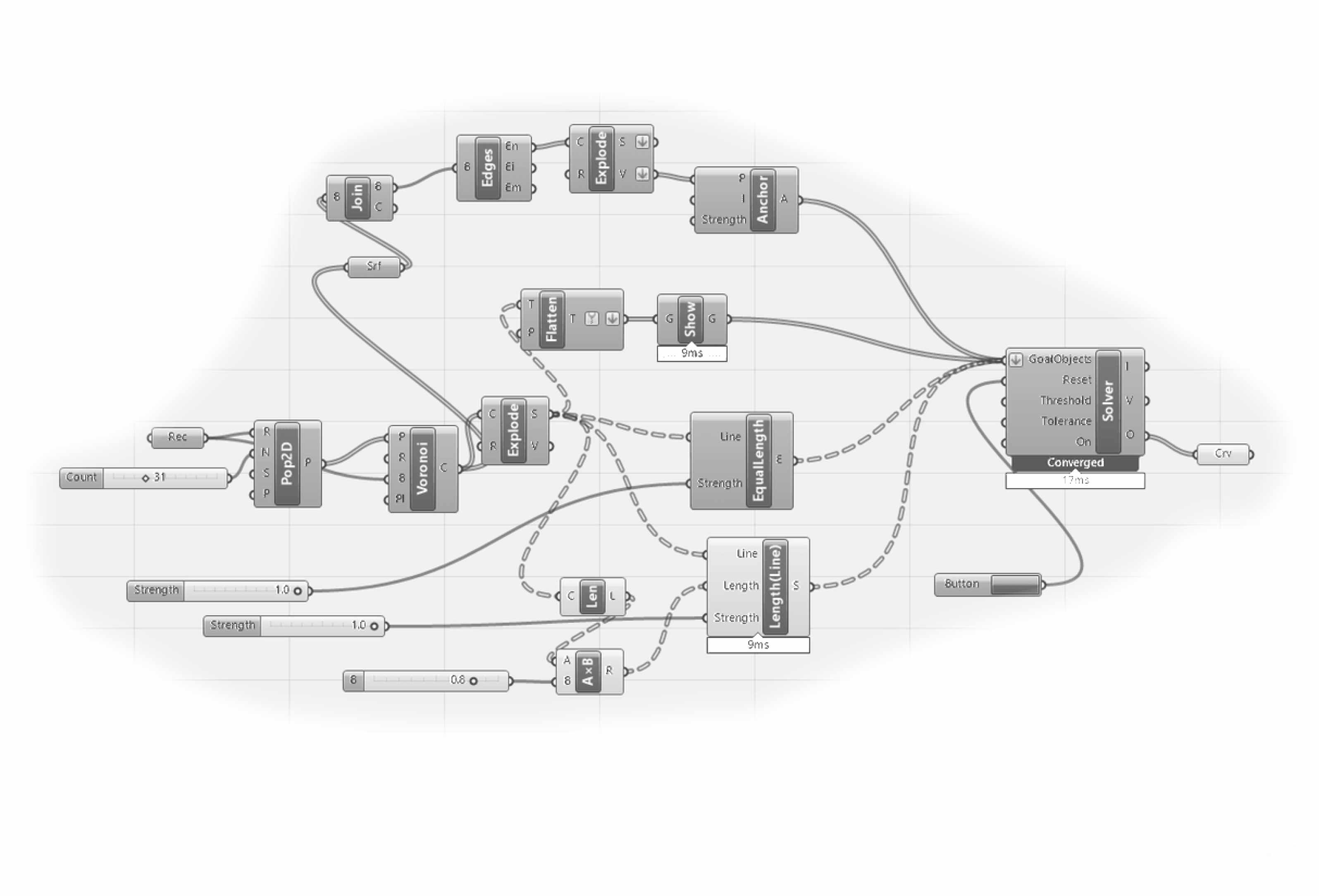
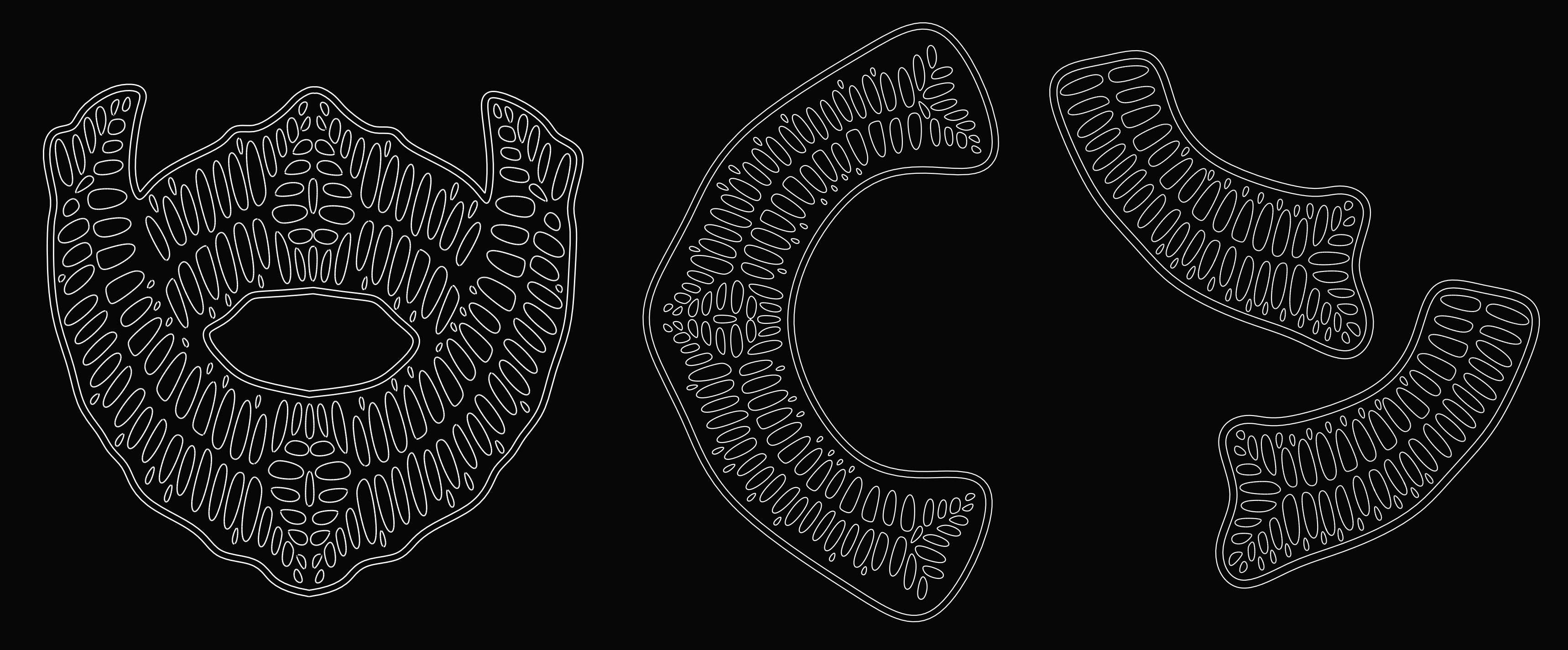
The shape of the patterns is inspired by the anatomy of wheat. I modelled the shapes using Grasshopper.

Mould parameters - depth of pattern 7 mm - average thickness 3 mm
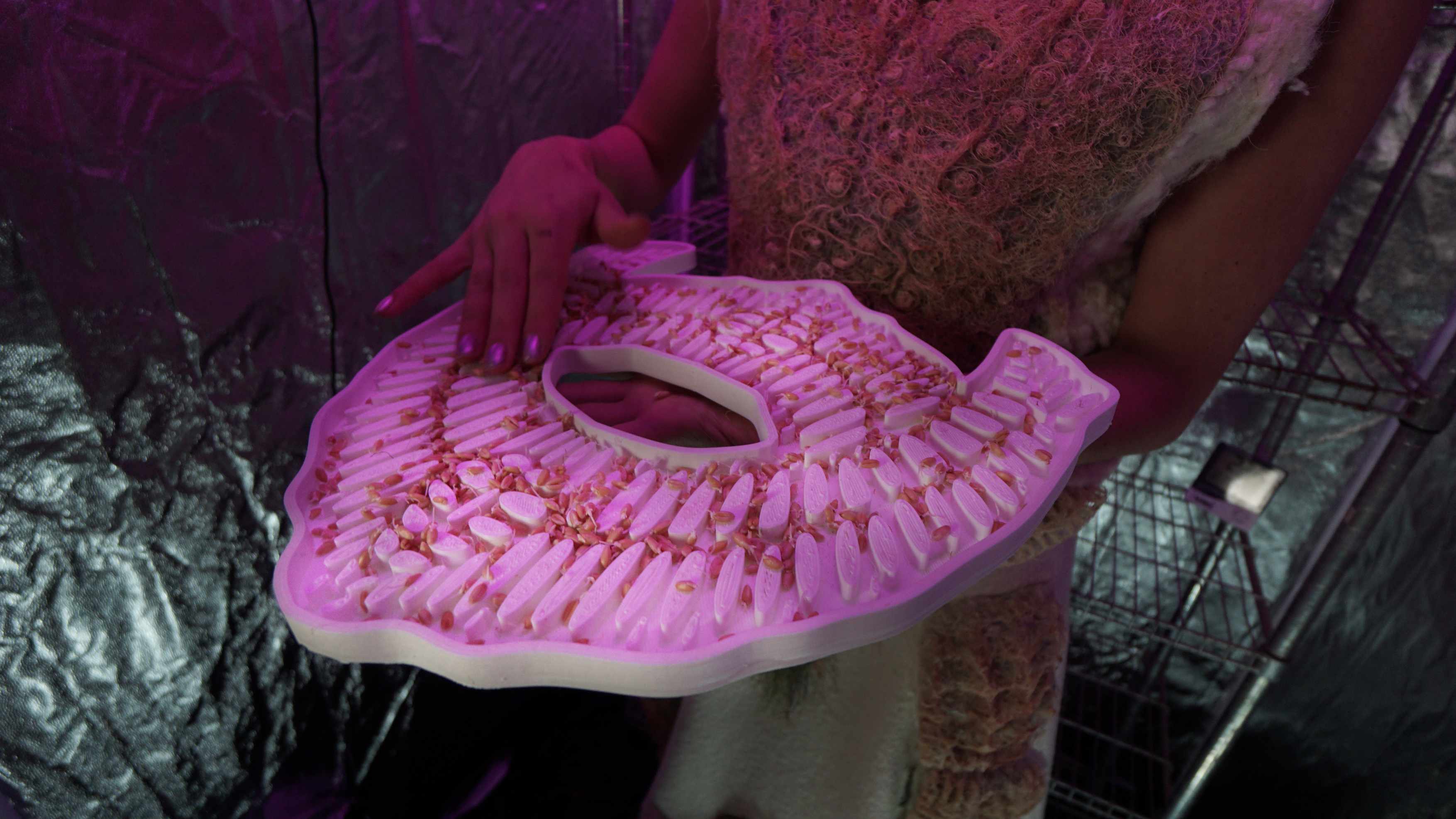
PROCESS | Regular care with love¶
To ensure the healthy growth of wheat, water it regularly using a sprinkler once every day.
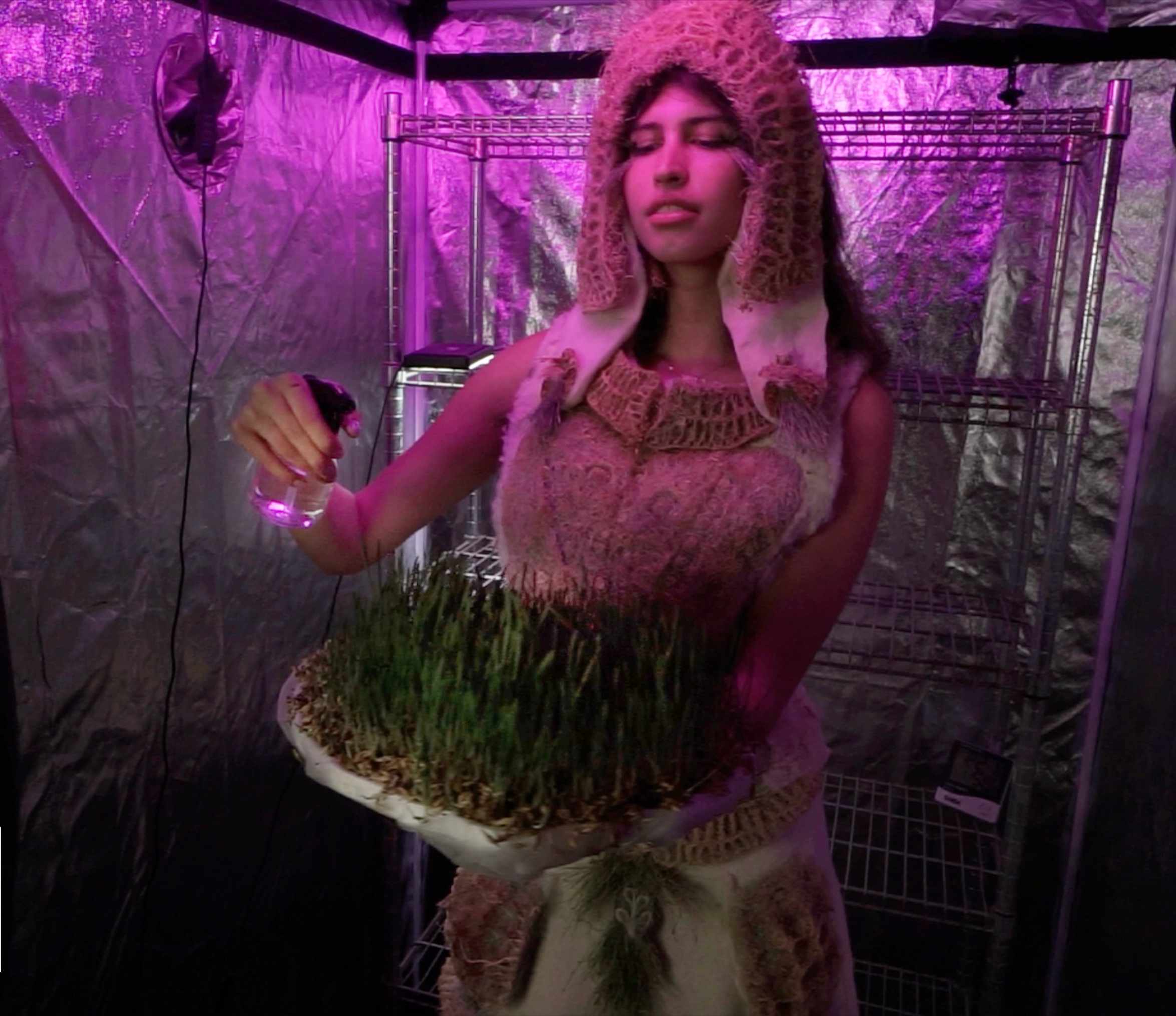
PROCESS | Harvesting¶
- Drying temperature ~ 60°C
- 7 - 12 cm grass = ready to harvest
When the wheat reaches a grass length of 7 centimeters, it's time to harvest. This unique moment is full of excitement as we finally get to see our embroidery. For this embroidery sample, I used barley seeds and a thin layer of soil to provide better nutrition for the plants. I used a lightweight viscose fabric to separate the soil from the roots. Once harvested, it's best to dry the roots immediately to maintain their light color and prevent any possible contamination. To dry them, you can use a hot air oven and set it to 60°C. The drying time will depend on the size of the embroidery, which typically takes around 2-4 hours.

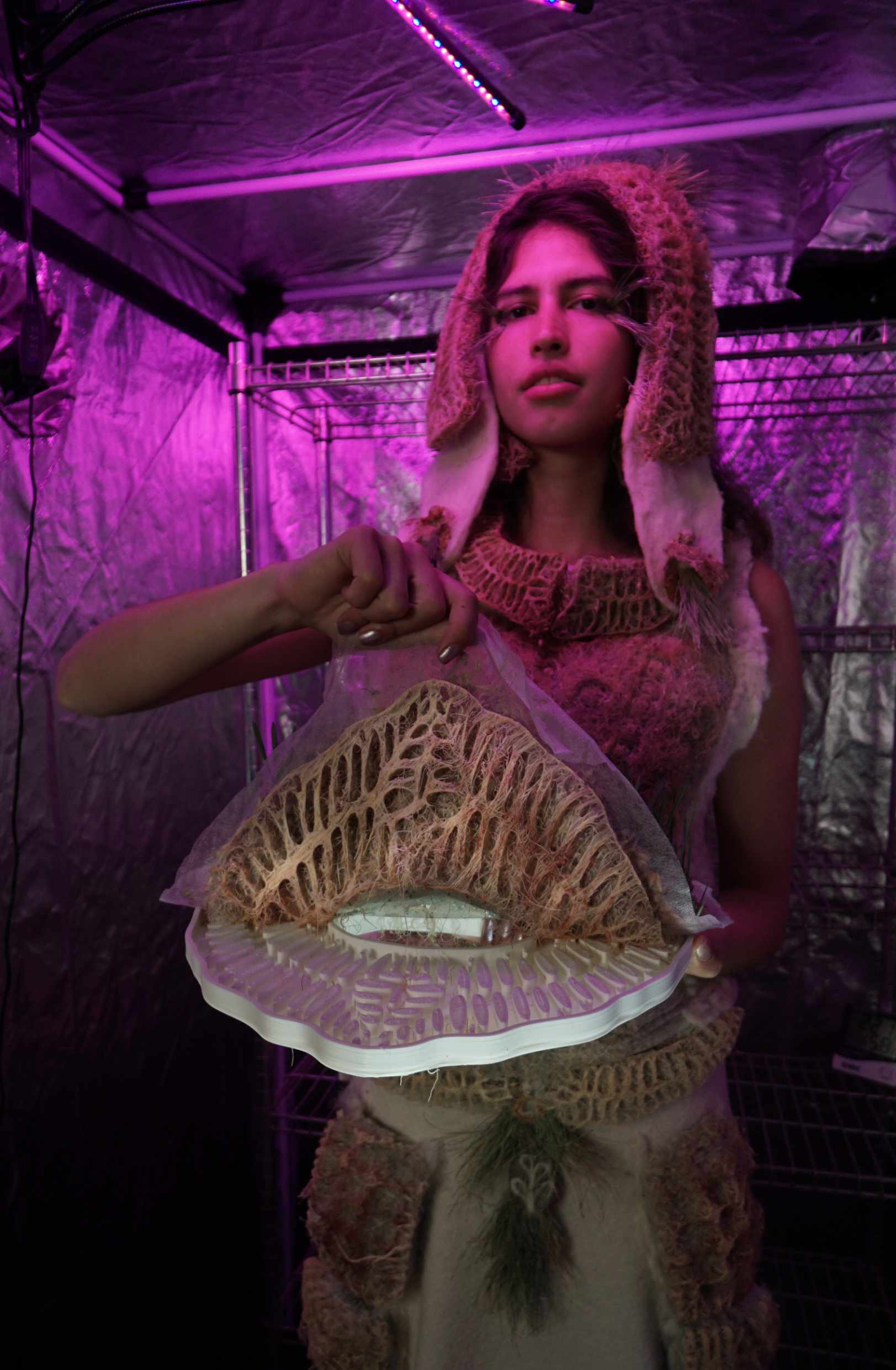

PATTERNS & MOULDS | Wheatgrass and barley¶
The material's final appearance is greatly affected by the shape of the pattern and the chosen mould material. If we compare wheatgrass and barley, barley retains its light beige color even after complete drying, while wheatgrass turns brown. For creating the lace and embroidery of the costume, I used 3D printed PLA and beeswax molds.
Cultured patterns in 3D printed PLA moulds¶

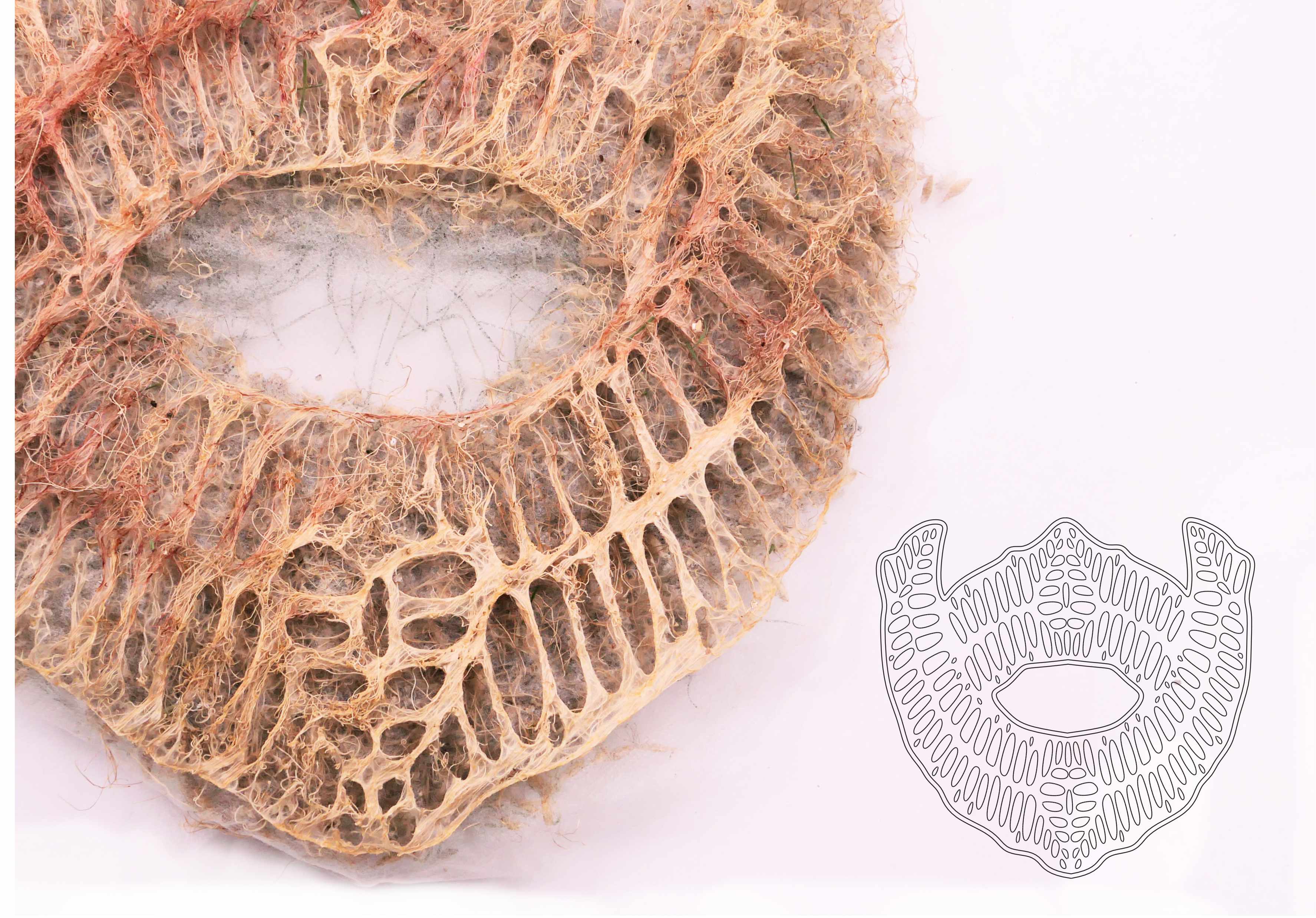


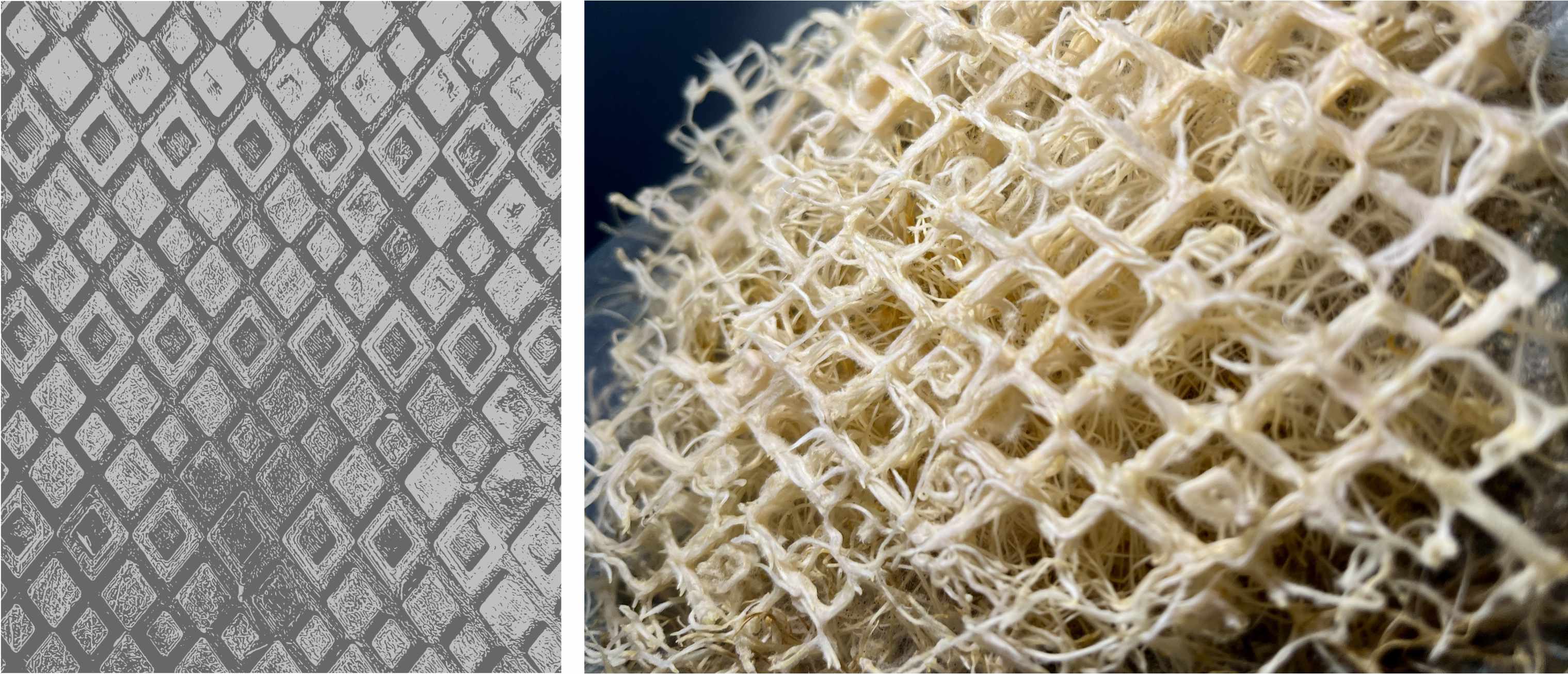
Barley & beeswax moulds¶

